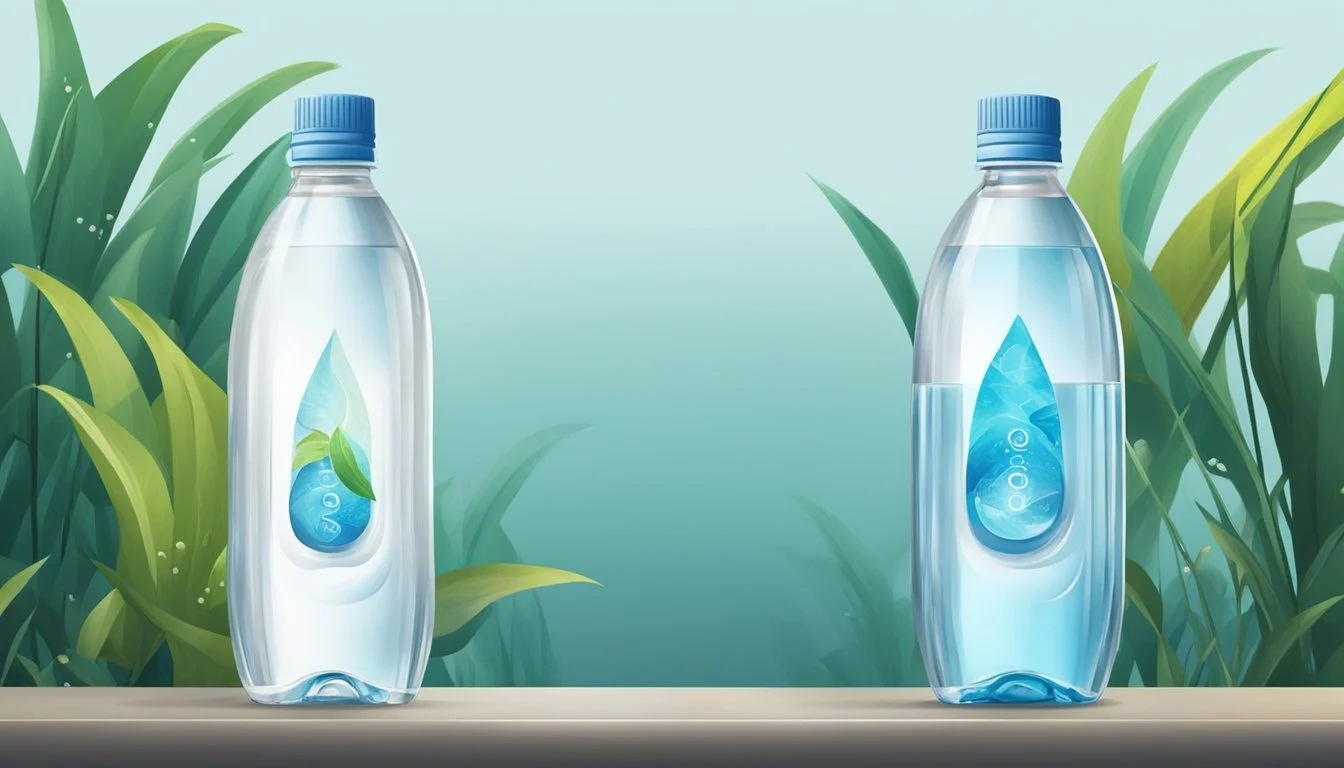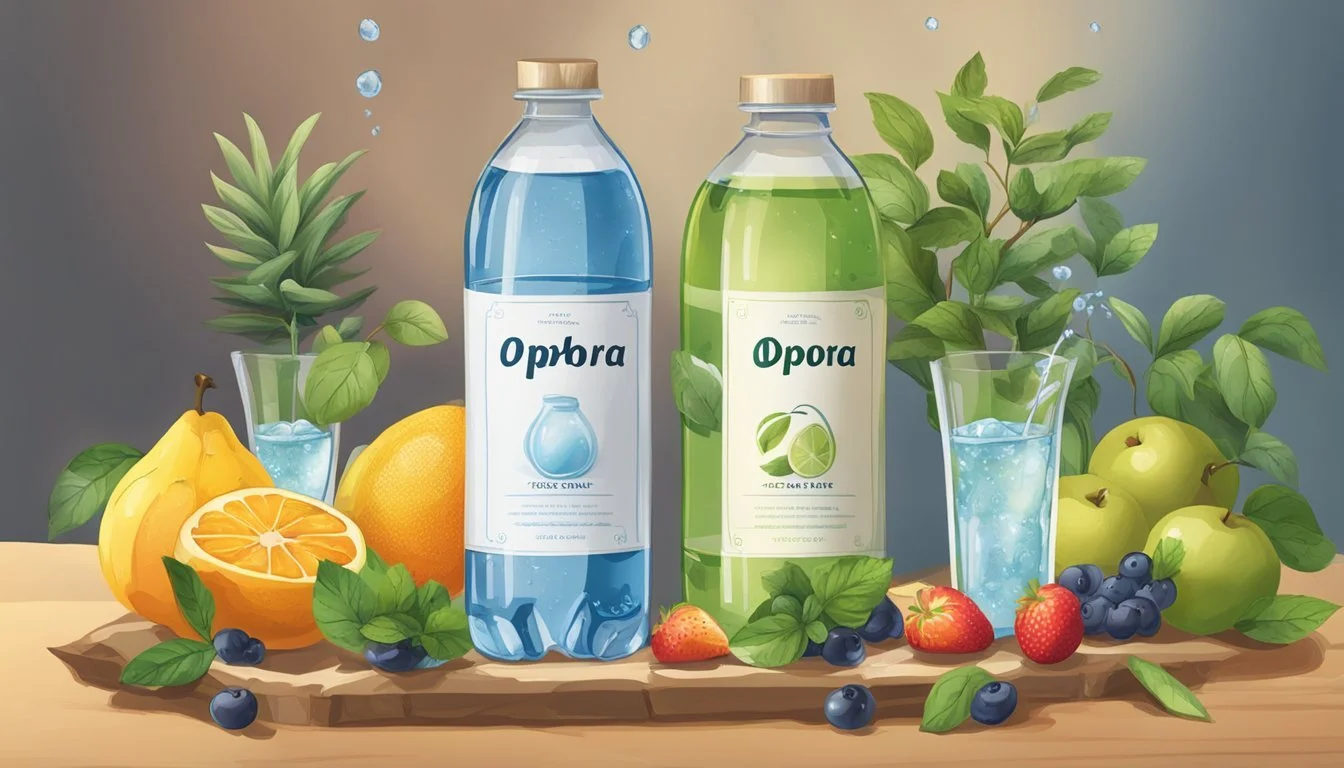Ophora vs. Action
The Ultimate Bottled Water Showdown
Comparing premium bottled waters often leads to debates about quality, purity, and value. Ophora Water, with its reputation for unparalleled quality and a price tag of $13.99 per bottle, epitomizes high-end bottled water. It has been touted for its superior taste and benefits, making it a favorite among health-conscious individuals willing to splurge.
Action, while not always as prominently mentioned in discussions of premium waters, also has a significant following. Known for its balanced mineral content and clean taste, it often appeals to those who prioritize both quality and affordability. When it comes to deciding which is better, it ultimately depends on what you value more: the unparalleled luxury of Ophora or the balanced, accessible quality of Action.
For readers who are passionate about making informed choices in their bottled water consumption, digging into aspects such as taste, price, and availability will provide a clearer picture. This comparison of Ophora and Action will help demystify the luxurious and practical sides of choosing the right bottled water for your lifestyle.
Overview of Bottled Water Industry
The bottled water industry is one of the fastest-growing sectors globally. From 2010 to 2020, global sales surged by 73%, driven by rising health concerns and the demand for safe drinking water.
In the United States, the market was valued at $44.6 billion in 2023 and is predicted to grow at a compound annual growth rate of 5.8% until 2030. Factors like health consciousness and distrust of municipal water contribute to this growth.
Major brands such as Dasani, Aquafina, Evian, Fiji, and Smartwater dominate the market, each offering distinct selling points. Products range from reverse osmosis to hyper-oxygenated and luxury options, catering to different consumer needs.
Luxury water brands like Evian and Fiji emphasize purity and exceptional taste, often sourcing water from specific geographical locations. On the other hand, Smartwater focuses on added benefits like electrolytes for enhanced hydration.
Reverse osmosis is a common purification method used by brands like Dasani and Aquafina. This process removes impurities and contaminants, providing clean and safe drinking water.
Brands such as Ophora Water go a step further, incorporating advanced filtration techniques to ensure nano-purity® and balanced alkalinity. This includes the use of patented processes for oxygen stabilization, appealing to a niche consumer base interested in both purity and functionality.
Given the diverse range of products, consumers have numerous choices, guided by brand reputations, purification methods, and additional health benefits.
Understanding Water Quality and Health
Water quality has a direct impact on health and wellness. Key factors such as pH levels, mineral content, and the presence of contaminants determine the overall safety and benefits of drinking water.
PH Level and Alkalinity
pH Level is a crucial aspect of water quality, indicating how acidic or alkaline the water is. Alkaline water typically has a pH above 7, which is considered neutral. Many bottled water brands, such as Essentia, advertise higher pH levels, arguing that alkaline water can neutralize acid in the body, potentially improving health and preventing disease.
While there's debate over these health claims, pH-balanced water may help some people manage acid reflux and other conditions. However, a very high pH level may not be suitable for everyone, and individuals should consider their specific health needs when choosing bottled water.
Minerals and Electrolytes
Minerals and electrolytes are essential for various bodily functions. Natural spring water and some purified water brands contain important minerals like calcium, magnesium, and potassium. These electrolytes aid in hydration, muscle function, and maintaining blood pressure.
Water brands like Essentia enhance their water through processes like reverse osmosis and ultraviolet exposure, then infuse it with electrolytes. This can be particularly beneficial for athletes or individuals seeking to boost their mineral intake. It's important to check water labels for added minerals to ensure it meets dietary needs.
Contaminants and Purification
Contaminants in drinking water can pose serious health risks. Common contaminants include heavy metals, chlorine, fluoride, bacteria, and viruses. Effective water purification methods are essential for removing these harmful substances.
Techniques like reverse osmosis, micro-filtration, and ultraviolet treatment help produce purified water. These processes ensure the removal of contaminants while preserving beneficial minerals. It's vital to choose water that has undergone rigorous filtration processes to guarantee safety and quality. Brands like Essentia emphasize 99.9% purity, achieved through advanced filtration and ionized treatments.
Ensuring water quality through careful selection of bottled water can significantly impact one's health and wellbeing. Look for detailed purification processes and added minerals on the label to make informed choices.
Comparative Analysis of Ophora and Action
Ophora and Action bottled waters have distinct features that set them apart. This section assesses their source and origin, purification and filtration processes, and nutritional profile and health benefits.
Source and Origin of Water
Ophora sources its water from Santa Barbara, California, focusing on delivering clean drinking water. The water undergoes extensive testing and meets high standards for purity.
Action draws its water from various natural springs. Each source is chosen for its purity and mineral content, ensuring the water is naturally clean and beneficial.
Both brands emphasize the quality and purity of their water sources but differ in geographic origin and supplier processes.
Purification and Filtration Processes
Ophora employs proprietary Nano-Pure technology, which removes over 30,000 known contaminants. The process includes reverse osmosis and hyper-oxygenation, resulting in water that is Nano-Pure® and hyper-oxygenated.
Action uses a multi-step filtration process. This includes reverse osmosis, carbon filtration, and UV sterilization. The goal is to achieve high purity levels while retaining essential minerals.
Both brands utilize advanced technology to ensure the water is free from contaminants but have different proprietary methods.
Nutritional Profile and Health Benefits
Ophora offers mineralized, pH balanced, and hyper-oxygenated water. This water provides essential minerals and electrolytes, which can promote hydration and overall health. Consumers report benefits like improved metabolism and better cellular hydration.
Action provides water that is rich in natural minerals and electrolytes. It is often alkaline, with a pH that supports better hydration and balance within the body.
Both brands aim to offer water that supports health through minerals and electrolytes, though Ophora focuses more on oxygenation and balance, while Action emphasizes natural mineral content and alkalinity.
Taste Profile and Sensory Perception
Bottled water brands, such as Ophora and Action, can offer distinct taste profiles driven largely by their mineral content and meticulous quality control.
The Role of Minerals in Taste
Minerals play a crucial role in the taste of water. The presence and concentration of minerals such as calcium, magnesium, and potassium can influence the overall flavor profile. High mineralization often results in a crisp and robust taste, while lower mineral levels lead to a smoother, softer experience.
Ophora is known for its high oxygen content, which can create a unique, refreshing taste. Action, on the other hand, often emphasizes its balanced mineral composition, which might appeal to those preferring a more neutral palate.
These differences can be subtle but noticeable, especially to discerning consumers or water sommeliers who analyze the fine distinctions in taste.
Expert Opinions and Taste Tests
Expert taste tests and evaluations provide insight into consumer preferences for bottled water. Water sommeliers utilize methods such as sensory profiling and descriptive analysis to identify key flavor characteristics.
In recent studies, methodologies like Temporal Dominance of Sensations (TDS) and free-choice profiling have been employed to understand consumer preferences.
Ophora often scores high for its invigorating taste due to its high oxygenation. Action's results reveal a consistent preference for its well-rounded mineral balance.
Both brands use rigorous testing to ensure their water profiles meet high standards, offering reliable quality and taste.
Environmental Considerations and Sustainability
When choosing between Ophora and Action bottled water, it is essential to assess their environmental impact and sustainability practices. This evaluation focuses on their bottling processes and the water footprint.
Bottling Processes and their Ecological Impact
Both Ophora and Action utilize different bottling practices that affect the environment significantly. Action primarily uses traditional PET plastic bottles. PET is recyclable, yet its recycling rate remains low, causing plastic waste.
Ophora emphasizes eco-friendly packaging, often using materials like recycled plastic or glass. Glass has a lower environmental footprint since it can be reused and recycled effectively. Ophora also invests in sustainable manufacturing techniques, reducing energy consumption in the bottling process.
These efforts substantially lower their carbon footprint compared to Action. Striving for higher sustainability standards, Ophora frequently audits its supply chain to ensure minimal ecological disruption.
The Water Footprint of Bottled Water Brands
The water footprint varies between brands and offers insights into their sustainability. Action’s production process involves significant water usage, not only in the filling stage but also in bottle manufacturing. Each stage contributes to higher water consumption and environmental stress.
Ophora, known for its advanced purification systems, adopts measures to reduce waste. These systems include water recycling processes that reduce the overall water footprint.
Additionally, Ophora sources water responsibly, ensuring minimal environmental disruption. They typically partner with suppliers who adhere to sustainable water management practices.
In contrast, Action often draws large quantities from a single source, which can strain local ecosystems. These differences highlight Ophora’s commitment to sustainability and reducing environmental impact.
Consumer Perspectives and Market Trends
Consumer interest in bottled water is driven by convenience and perceptions of quality, influencing market trends and brand reputations. Preferences and loyalty among brands like Essentia, Fiji Water, and others shape how consumers view and purchase bottled water.
Popularity Trends in Bottled Water
Bottled water has experienced substantial growth over the past decade. Global sales surged 73% between 2010 and 2020, highlighting its increasing popularity. In the U.S., the market neared $46 billion in 2022, driven by the demand for convenient, health-centric hydration.
Shoppers at grocery stores often gravitate toward brands like Fiji Water, Voss, and San Pellegrino, drawn by their distinct flavors and perceived health benefits. Core Hydration and Mountain Valley are also popular choices due to their premium positioning.
The trend toward sustainable options is growing, as seen with Boxed Water. Despite the higher prices, consumers are willing to pay for what they believe are safer and higher quality options compared to tap water.
Consumer Reports and Brand Reputation
Brand reputation plays a pivotal role in consumer purchasing decisions. According to recent consumer reports, perceptions of quality and safety majorly influence bottled water preferences. Many believe that brands like Essentia and Lifewtr offer superior hydration and health benefits.
Fiji Water and Icelandic Glacial are often praised for their natural origins and taste, while Eternal Water and Acqua Panna are recognized for their unique mineral compositions. San Pellegrino attracts those who prefer sparkling options.
Brand loyalty is strong in this sector. Once consumers find a brand that meets their expectations, they tend to stick with it. Grocery stores house a variety of these brands, ensuring consumers can easily access their preferred bottled waters.
Conclusion: Choosing Your Ideal Bottled Water
When comparing Ophora and Action bottled water, several factors come into play.
Ophora boasts advanced water purification techniques. Their process removes over 30,000 contaminants, resulting in hyper-oxygenated, pH-balanced, and mineralized water. They market themselves as producing the "World's Healthiest Water."
Action, on the other hand, emphasizes purity and lack of chemical additives. The focus here is on maintaining a natural taste without the use of harsh purifying processes.
Factors to Consider
Health Benefits: Ophora provides hyper-oxygenated water, potentially offering superior hydration.
Taste: Action users might prefer the natural flavor without the tang of added minerals.
Environmental Impact: Consider the sustainability of each brand's practices.
Price: Luxury waters like Ophora may command higher prices.
Summary Recommendation
Individuals prioritizing advanced purification and potential health benefits may lean towards Ophora. Those who favor a clean, natural taste without extensive processing might prefer Action.
More About Ophora
Mountain Valley Spring Water vs Ophora: Which Bottled Water is Better?
Ophora vs Kirkland Signature: Which Bottled Water is Better?
Richard's Rainwater vs Ophora: Which Bottled Water is Better?
Whole Foods Italian Still Mineral water vs Ophora: Which Bottled Water is Better?







